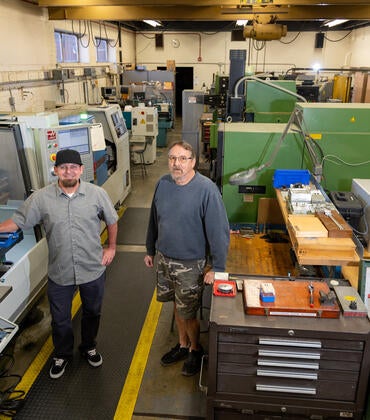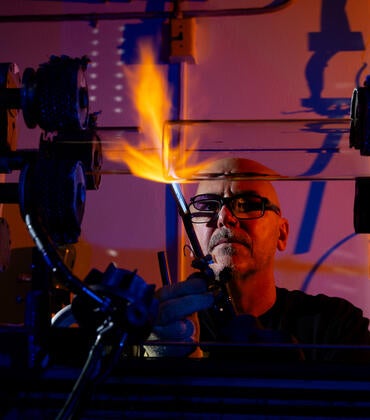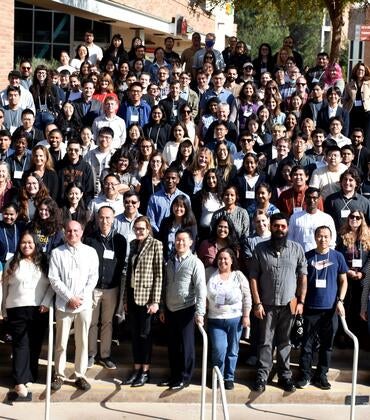Vaping of vitamin E acetate, or VEA, was linked to the outbreak of e-cigarette or vaping-associated lung injuries, or EVALI, in the United States in late 2019. VEA vaping can generate reactive oxygen species, or ROS, that contribute to oxidative lung injury.
In a paper published earlier this year in Chemical Research in Toxicology, a research team led by Ying-Hsuan Lin, an assistant professor of environmental toxicology, identified duroquinone as one of the toxic byproducts from VEA vaping that resulted in significant upregulation of NQO1 and HMOX1 genes in human lung cells. NQO1 is a quinone-metabolizing enzyme; HMOX1 is an oxidative stress biomarker.
The research was done on human bronchial epithelial cells. According to Lin, her team’s findings provide scientific evidence that could be used to develop control and prevention strategies to reduce the incidence of lung illnesses associated with vaping.
Lin’s group began working on this topic around the time of the initial reports of the EVALI outbreak.
“The rising rates of hospitalization and mortality were alarming,” she said. “Huanhuan Jiang, a former UCR Chancellor’s Postdoctoral Fellow working with my group, took the lead on the first vaping project in my lab to characterize the chemical and toxicological properties of emission products from several vaping liquid diluents. Since then, we have conducted several follow-up studies on understanding the chemistry and health effects of vaping emissions.”
The research was supported by a Faculty Development Award through the UCR Academic Senate. Alexa Canchola, a doctoral student in Lin’s group, was supported by a training grant in environmental toxicology from the National Institutes of Health.
Lin and Canchola were joined in the research by C. M. Sabbir Ahmed, Kunpeng Chen, and Jin Y. Chen.
The paper is titled “Formation of redox-active duroquinone from vaping of vitamin E acetate contributes to oxidative lung injury.”
In this Q&A, Lin answers a few questions about the study.
Q. Why are your findings important?
The late-2019 outbreak of EVALI in the United States clearly demonstrated to the public the health risks of vaping. However, the causative agents and underlying molecular pathways are still being researched. The findings from our study provide evidence that quinone toxicity may be one of multiple biochemical mechanisms through which VEA vaping induces oxidative lung damage.
Our findings provide useful information on the complex chemistry that takes place during and post vaping, as well as its potential health impacts on human lung cells. The identification of degradation byproducts, in conjunction with cell exposure experiments, is a first step toward understanding the safety of vaping liquid ingredients.
Recent reports that link VEA to EVALI are mostly based on its detection in the patients’ lungs and their reported usage history of vaping products. With detailed chemical characterization, this study provides direct evidence that thermal degradation products of VEA are causative agents leading to oxidative damage in human lung cells.
Q. What was most surprising to you in your findings?
The evidence of indoor chemistry that alters the chemical composition of vaping emission products. Passive vaping, or secondhand exposure, may pose a new health risk.
Q. What do you plan to explore next?
We plan to further explore the potential interactions among thermal decomposition products, how variations in vaping behavior may alter the chemical composition and health effects of vaping aerosols, and how vaping aerosols continue to evolve in the indoor environment.





